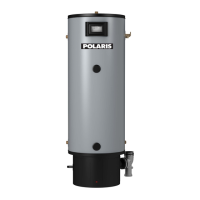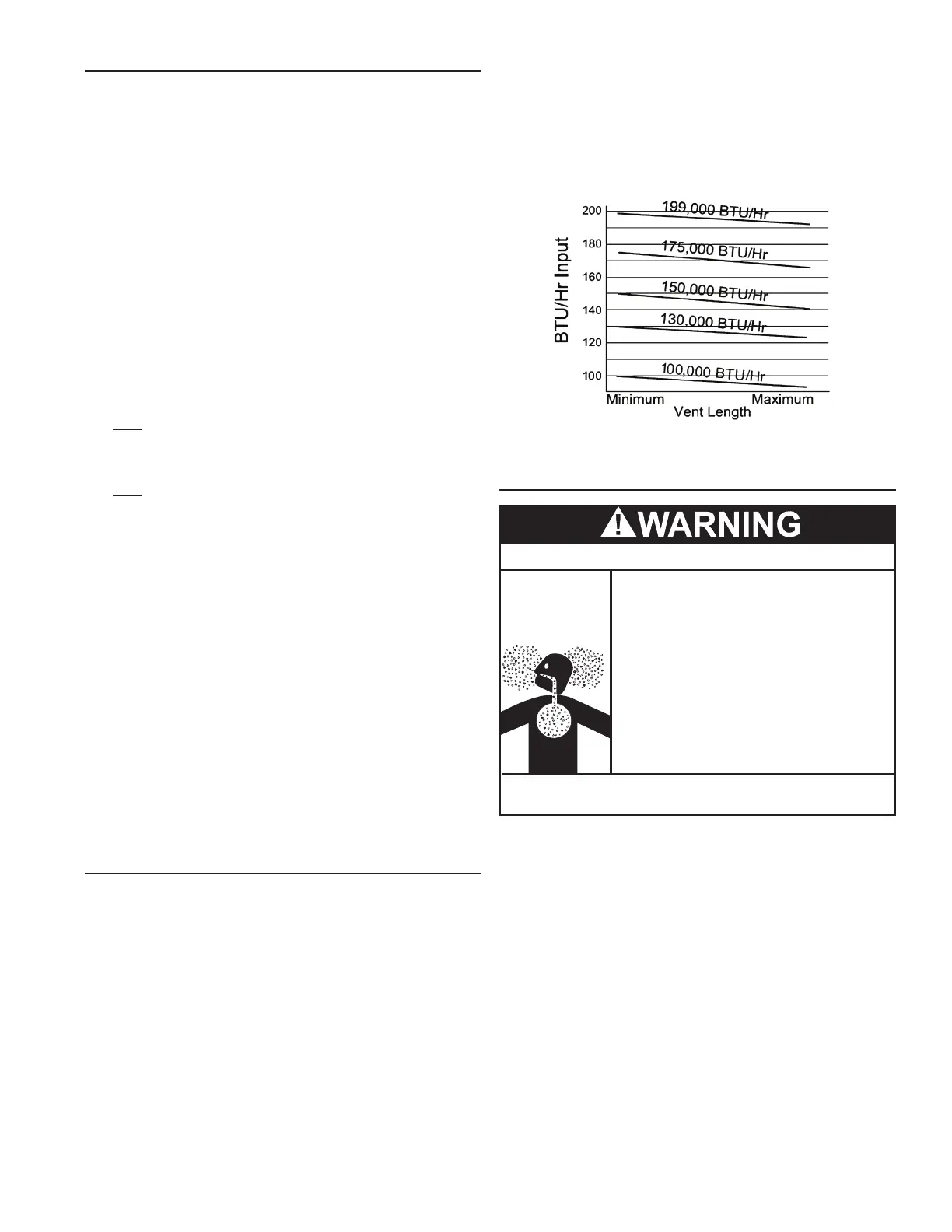47
CHECKING THE FIRING RATE
Follow these instructions to determine the actual ring rate of the
water heater:
NOTE: The heaters covered by this manual are capable of
modulating their ring rate. The ring rate should be checked with
the heater operating at it's full ring rate.
1. Ensure there are no other gas red appliances connected to
the gas meter ring during this test.
2. Contact the gas supplier to determine the heating value, in Btu
per cubic foot, of the gas supply.
3. Connect a manometer to the supply gas pressure tap. Follow
the instructions for Start Up beginning on Page 44.
4. Start the water heater and ensure it is ring.
5. Check the supply gas pressure, refer to Supply Gas Systems
on page 17 for correct pressure.
6. Locate the gas meter serving the water heater.
7. Time how long (in seconds) it takes for one cubic foot of gas
to be used while the water heater is ring with a stop watch.
8. Use the formula below to “clock” the gas meter and determine
the actual ring rate of the water heater based on the heating
value (Btu per cubic foot) of the gas supply:
x H = Btu/hr
T
x 1050 = 300,000 Btu/hr (87.9 kW)
3600
Example:
• 3600 = seconds in one hour.
• T = time, in seconds, to burn one cubic foot of gas.
• H = heating value of gas in Btu per cubic foot.
• Btu/hr = actual ring rate of the water heater.
NOTE: 1050 Btu per cubic foot is a standard value for natural gas.
Standard propane gas Btu content is 2500 Btu per cubic foot. Btu
values may change in certain areas and at high elevations. Check
with the local gas utility company.
TO TURN OFF GAS SUPPLY
1. Change the Operating Set Point to the lowest temperature
setting, see Operating Set Point And Differential Adjustment
on page 39.
2. When the water heater has completed its shut down sequence
and enters the standby mode, turn the water heater’s Enable/
Disable switch to the “Disable” position. When in the "Disable"
position the switch only removes electrical power from the gas
control valve so that water heating is disabled. The display,
CCB, and other electrical components will still be energized
and the display will read "Water Heating Disabled".
3. Close Main Gas Shutoff Valve, see Figure 37 on page 31
GAS INPUT RATE
The gas input rate of this water heater is affected by several
environmental factors such as:
• The heating value of the gas
• The air and gas densities (which vary widely due to barometric
pressure and temperature changes)
• Venting installations (pipe diameter, length and ttings)
• Altitude
When measuring the input rate these factors should be incorporated
into the calculations. Also measure the gas consumption over a
sufciently long time to obtain an accurate gas consumption rate
(e.g. 3-5 minutes, not one revolution of the meter needle).
Long vents and each additional elbow, inherently reduce the gas
input rate due to increased resistance to moving combustion air and
ue gases. The approximate maximum/minimum input for all PG10,
GHX, BSP, and BTP models is shown in Figure 44.
Figure 44
HIGH ALTITUDE INSTALLATIONS
Breathing Hazard - Carbon Monoxide Gas
•
Special consideration must be taken with
installations above 7,700 feet (2,347 m).
•
Please contact an A. O. Smith qualified
service agent to obtain the proper
setup and instructions before lighting.
•
Failure to implement the proper setup
will result in improper and inefficient
operation of the appliance resulting in
production of increased levels of
carbon monoxide gas in excess of the
safe limits which could result in serious
personal injury or death.
Breathing carbon monoxide can cause brain damage or
death. Always read and understand instruction manual.
This high efciency water heater is certied for use without
modication for an altitude of 7,700 feet (2,347 m). Consult the
factory for installation at altitudes over 7,700 feet (2,347 m).
Some gas utility companies derate their gas for altitude, making it
unnecessary to install high altitude orices. Call the local gas or
utility company to verify BTU content.
Due to the input rate reduction at high altitudes, the output rating of
the water heater is also reduced and should be compensated for in
the sizing of the equipment for applications. See Planning the Vent
System on Page 23.

